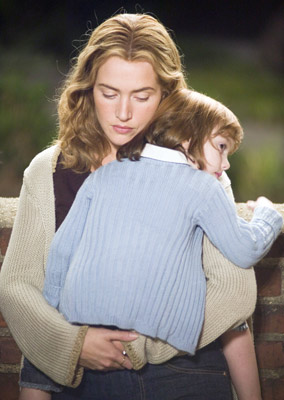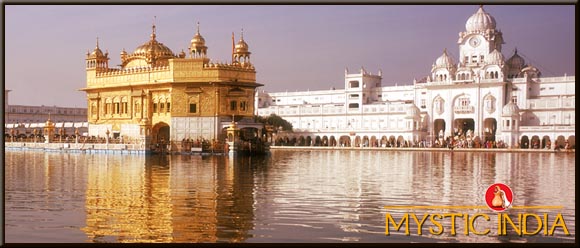I saw quite a few really good films on day 3 of SAIFF.
FIVE GUYS FOUR BULLETS, a documentary directed by Karan Singh, is a travelogue of five buds cruising to the highest motorcycle trail in the world on Enfield Bullets. The five guys bike from Delhi to Ladakh and along the way, face various obstacles like mudslides, rain, flooding and altitude sickness. It was very entertaining primarily due to the fact that one of the five, Brij, had excellent camera presence and was very humorous.
In terms of the filmmaking, some of the camera angles were very interesting — Karan clearly had motorcycle mounts for the camera, so there were images of him as he was driving and some cool angles from the wheel-level of the bikes. In addition, the sound quality was exceptional although I didn’t see any mikes. If someone knows more details about this film was shot (equipment used etc.) or how to get in touch with Karan, I’d love to talk to him.
I then saw a couple of short films. I love reviewing shorts. I feel that shorts are overlooked in the world. Yes, of course a feature takes more money and effort, but shorts are real films. In fact, you have to tell a great story in a smaller amount of time.
THE APPLICANT by Faisal Qureshi is a 5-minute short. I like the director’s blurb best:
‘Eddie’ Ahmed goes in for a job interview for a job he never applied for. Having been out of work for two years, and needing to support two young children, he is desperate and willing to do whatever it takes to get this job. His interviewer tells him he has to take an exam in order to get the job. Eddie is not prepared, but agrees to take the exam anyway. But the exam is not what he expected and what he has to do to get the job takes him to the edge of his humanity. What’s an applicant to do?
The director had excellent shot selection — one of the shoes as a woman walks down a long corridor, shots that emphasize the sterile office location, close ups to emphasize the stress levels. That just heightens the shock when we find out what the test really is. And there is another stunner in store when we realize how Eddie will approach the test.
ORANGE by Giri Mohan Coneti, 17 minutes long, at the core, is a cool idea. Hamid and his girlfriend Katie live in NY and it is right after 9-11. They’ve been in a relationship for three years. Katie happens to watch TV as Hamid showers and she hears that the NYPD is looking for a terrorist called Hamid. She starts to worry — the news that the terrorist was recently in Europe heightens her concern as she realized that Hamid was in Europe and he refuses to talk about it. This leads to more stress and the final confrontation. The major issue with this short was the acting by the woman who played Katie (of course there is the issue that having dated Hamid for three years, she still doesn’t know it is as common a name as Adam, but we can overlook that). A different actress (and fewer words) would have made this short more powerful.
Question — when you read a review of a short, do you want the spoiler or not? In many ways, a short is all about the ending, the twist the director can come up with, and so I am loath to give it away. I’d love to hear other people’s thoughts.
FROM DUST by Dhruv Dhawan is a documentary about the post-Tsunami situation in Sri Lanka. After the Tsunami, the Sri Lankan government put in place a rule that there would be no building whatsoever within a 100-meter distance from the ocean. That meant that a lot of people who had lived there before the Tsunami, had to relocate. This doc outlines how poorly the Sri Lankan government handled the whole situation — families living in tents for months, promises of a plot of land in another location that never happened because those plots couldn’t be built on and very sadly, the decision to relocated fisherman far away from the ocean where they wouldn’t be able to engage in their livelihood. While all this is sad, one can say, well, maybe the government is doing it for the good of the people, for their safety.
But then, we see the real deception. The Sri Lankan government makes a stunning decision to allow hotels to be constructed within the 100-meter zone. So, all that prime land, for sale to developers. So, if the main reason to ban building was because of safety, then what about tourists’ safety? Ah, well, there was no good answer by the government officials. Was the 100-meter zone enforced with this deception in mind? Only the Sri Lankan government really knows.
There were two films scheduled for the evening, both by women directors. Due to a personal commitment, I unfortunately had to miss Nanda Anand’s first feature effort, RETURN TO RAJAPUR. From what I hear, this was a very good film and the grapevine indicates that this film has secured distribution! Congratulations, Nanda, that is a phenomenal accomplishment for a first time feature director!
HOPE AND A LITTLE SUGAR directed by Tanuja Chandra was a very good film from an experienced director. It is a 9-11 story about a Sikh family that loses its son. Colonel Oberoi (Anupam Kher) and his wife (Suhasini Mulay) live in the suburbs of New York with their son Harry (Vikram Chatwal) and his wife, Saloni (Mahima Chaudhry). One day, Saloni bumps into Ali (Amit Sial) and mistakes him for a Sikh friend (who’s shaved his beard off).
Ali is so besotted by Saloni that he plays along. When he arrives at the Oberoi residence, he’s devastated that Saloni is married, but he keeps up the pretense. As Ali spends more time with Harry and Saloni, it becomes obvious that he is not who they thought he was and he’s outed. But they find it amusing and they continue to include him family activities. Colonel Oberoi who fought in the 1971 Indo-Pak war has a less favorable view of Ali’s deception, but goes along.
Ali is a photographer who pays the bills by being a bike messenger and as he falls deeper in love with the married Saloni, he continues to take pictures of her that he plasters on his wall. One morning he gets up to sirens and looks out of his window to see the events of 9-11 unfolding. Harry dies in the attacks.
The movie shares the difficult aftereffects of the event, where the Colonel can’t come to grips with his son’s death and he and his wife get more and more distant. Ali gets closer to Saloni as she struggles to adjust to her life without Harry. The Colonel blames all Muslims for 9-11 and is very disturbed when he sees Ali at Saloni’s shop and he lashes out at Ali when he sees him.
Honestly, Ali’s focus on “winning” Saloni even while she mourns her husband was disturbing. There’s a scene where Ali is talking to Will, his photography mentor who runs a frame shop, discussing how the Colonel blames him for everything and hates him. And Will says, “Do you want to win over the girl or the father” (or words to that effect). Ali’s single-minded focus at a time of such great personal loss just seemed insensitive.
But besides this one disconnect, the rest of the film flows along beautifully. Throughout the film, Ali has flashbacks of the Bombay riots of 1992, when he was a young child. Eventually we see that he and his little brother get stuck outside as Ali is taking photographs of the mob. His focus on his photography gets his little brother killed. This is juxtaposed with the Colonel’s anger towards Ali and raises issues of how religious bigotry can exist in every community.
The acting was excellent across the board. Anupam Kher and Suhasini Mulay are both exceptional. When times are good, they are the jovial Sikh husband and wife, but it is in the second part of the film, when the stress and angst are heightened, that both of them truly do a great job. Mahima Chaudhry is very well cast and Amit Sial, was a little one-note, but for his first feature does a good job. Ranjit Chowdhry as Ghosh, a friend of the family, is an excellent choice.
This was a very good film and on Friday evening, there were about 200 people in the audience. If the producers had decided to screen it as planned on the opening day, they would have had about three times as many people to see film.










